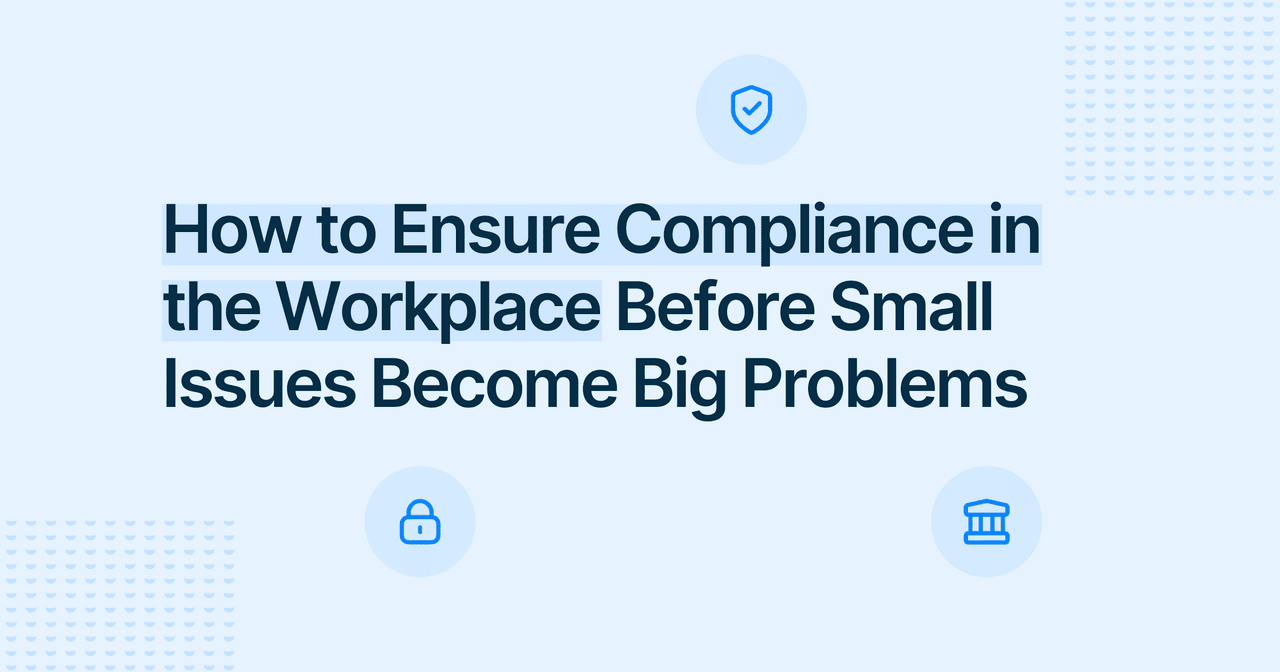



Discover the benefits of a transparent organization!
Try our free platform and strengthen the culture of openness in your team.
Workplace Environment

Yeva Bartkiv
Copywriter
Published
2025-07-31
Reading time
5 min


Table of contents
Subscribe to our newsletter
Preventing discrimination in the workplace isn't just about compliance with law - it's about building a respectful, equitable environment where all employees feel safe, valued, and empowered.
In today's workplace, subtle biases, uneven employment practices, and unclear policies still allow discriminatory practices to persist. The result? Damaged trust, lowered morale, legal risk, and significant harm to long-term performance and employee well-being.

Understanding how to prevent discrimination in the workplace requires a twofold approach. First, understanding the law, and second, implementing prevention into everyday culture and behavior. This guide will break down both parts clearly and practically.
So, what law prevents discrimination in the workplace? In the U.S., there are several key anti-discrimination laws enforced by the U.S. Equal Employment Opportunity Commission (EEOC). These laws protect employees and job applicants from being mistreated based on specific personal characteristics.
Key federal laws include:
These employee laws that prevent discrimination cover a wide range of employment decisions, from hiring and promotions to pay and termination. Many state laws also offer additional protections beyond federal law.
To enforce these laws, the EEOC offers guidance, investigates discrimination complaints, and may file lawsuits in cases of unlawful practices. You can learn more at EEOC.gov.
Workplace discrimination occurs when an employee is treated unfairly or unequally based on legally protected characteristics. This can affect any job-related process - from how someone is hired or paid to how they're disciplined or let go.
Common types of discrimination include:
It's also important to understand that discrimination doesn't need to be intentional. Many discriminatory practices stem from systemic policies, unconscious bias, or poor employment practices.

Even a seemingly neutral policy can have a disparate impact. That's why it's critical to audit workplace policies, ensure inclusive training programs, and build a complaint process that employees trust.
Now that we've covered the legal side, let's focus on how to prevent workplace discrimination in practical, daily terms. Here are strategies that make a real difference.
Every organization needs strong, visible, and regularly updated anti-discrimination policies. These should define protected characteristics, outline examples of discrimination and harassment, and explain how to report issues confidentially.
Good policy also includes harassment policies, anti-harassment standards, and detailed procedures for dealing with harassment complaints and investigations.
Compliance training isn't enough. Effective training programs must go beyond the law to help people understand bias in real-life contexts. They should include:
Training should be tailored to roles and revisited often. And yes, leaders must attend too.
A robust and safe complaint process is critical. Many employees never file a discrimination claim simply because they fear retaliation or don't believe it will lead to change.
That's where anonymous tools like FaceUp come in. Employees can submit discrimination complaints safely, and human resources teams can track patterns, improve culture, and act swiftly.
You should also ensure your reporting process is well-known, accessible, and easy to use. To learn more, visit our explanation of Discrimination or explore our Anonymous Reporting Tool.
Providing reasonable accommodations is a legal requirement under the ADA, but it also reflects an inclusive culture. That might mean flexible work hours for religious observance, ergonomic equipment for a physical disability, or private space for lactation or prayer.

A good rule of thumb? Ask what each employee needs to do their best work, and meet those needs wherever possible.
DEI initiatives shouldn't live in a silo. To prevent workplace discrimination, DEI must be embedded in hiring, promotions, team structures, employment decisions, and leadership development.
That means collecting data to identify gaps, holding leaders accountable for progress, and making inclusion part of your work environment, not just your messaging.
Even with the best intentions, discrimination may still occur. Here's how to respond with transparency and care.
It also helps to communicate what changes are being made as a result. This builds confidence in the system and shows that accountability matters.
Legal compliance sets the floor. But if you want a truly inclusive workplace, you have to aim higher. Here's how to shift from policy to culture.
Preventing discrimination is not just about avoiding legal trouble. It's about upholding the dignity of your people and aligning with your organization's mission.
Understanding how to prevent discrimination in workplace settings is not just a legal obligation - it's a leadership practice that builds credibility, drives belonging, and supports innovation.
When you foster a culture of equity, fairness, and respect, you don't just protect your organization - you empower it.
Whether you're revising your anti-discrimination policies, improving your workplace policies, or launching new initiatives around DEI, make sure you're supporting your people with both structure and humanity.
Book a demo to see how FaceUp empowers organizations to detect issues early, respond fairly, and create safer, more inclusive workplaces.




Try our free platform and strengthen the culture of openness in your team.
Keep Reading

Alaa El-Shaarawi2025-12-087 min
Workplace Environment

Alaa El-Shaarawi2025-12-058 min
Legal & Compliance

Alaa El-Shaarawi2025-12-048 min
Legal & Compliance

Alaa El-Shaarawi2025-12-037 min
Legal & Compliance